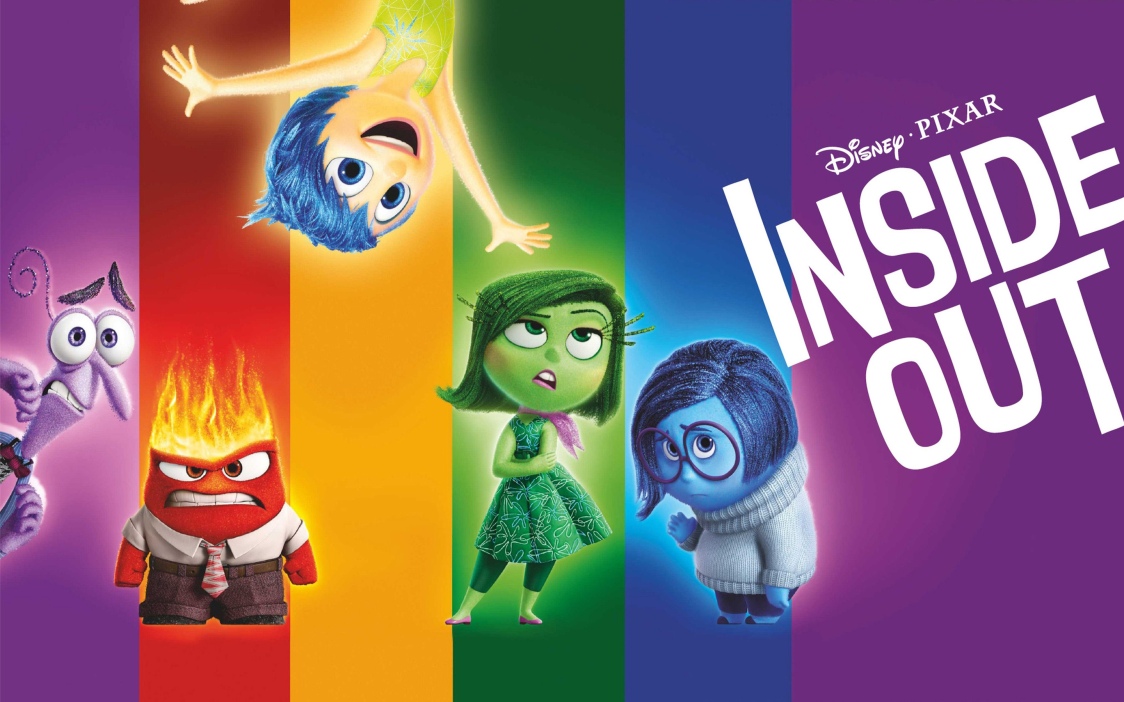So in theory my October half-term post should really be about enjoying the autumnal colours in the park and the feeling of kicking the leaves while we walk. Don’t get me wrong there is plenty of that going on in our family outings at the moment but when we’re all tired out from the fresh air and mindful walks there’s nothing better than snuggling on the sofa and watching a ‘feel-good’ film. Next time this happens in your house may I suggest the 2015 Pixar animation ‘Inside Out’ (official US trailer here)?

Recently we decided we needed a quiet afternoon in and set about watching the movie.
You may well already know that it’s a film about Riley, a girl who goes through the upheaval of having to move from one area of the USA to another. Obviously it explores all the challenges that she faces as a result of this. So far this sounds like a pretty run-of-the-mill family film. However, as we watched it I couldn’t help but grab my notebook and start to make a few notes as it struck me how some of the principles of Mindfulness permeated it. It appears others have suggested similar with very interesting articles from Mindful magazine and also Huffington Post on the film and its lessons.
There were undeniably some very mindful moments. You see, for the benefit of those who haven’t already seen the film yet lots of it is set inside Riley’s head and the main characters are the emotions of joy, sadness, disgust, anger and fear.

Whist watching the film there were lots of opportunities to chat to our 6 year old son about how our emotions come about and it’s definitely a film that helps to introduce some of the key features of Mindfulness to pre-teens and older. For instance:
- In the end (spoiler alert ;-)) the character ‘Joy’ recognises that sadness is a natural emotion that cannot be forever avoided and that it is healthy to acknowledge this. This links very well to the idea of how healthy it is to ‘just be’ with our emotions when being mindful and to be accepting of how we feel in the present moment whether this is deemed a positive or a negative state of mind.
- Throughout lots of the film ‘Joy’ is trying to stop ‘Sadness’ from touching Riley’s memories and tainting them but eventually there is a realisation that just as our emotions can be complex and mixed so our memories of events can be too…. and that’s okay. In Mindfulness sessions people are sometimes encouraged to label their thoughts and feelings in order to be more aware of them and how complex they can be. The film highlights to us all that our emotions are often not simply “cut and dried”.
- There is a moment in the film when ‘Sadness’ listens to Bing Bong an old toy of Riley’s. Instead of trying to ‘fix’ his problems she simply sits with him and listens attentively showing empathy for him by saying “that must have been hard”. This small part of the film is a big insight into what a powerful tool empathy can be and how important it is to help us to connect with others.
- The inclusion of the characters ‘Fear’, ‘Disgust’ and ‘Anger’ in the film also emphasise what happens to us when our natural ‘Fight or Flight’ response kick in. Mindfulness teachers often encourage people to try to observe the physical sensations that are connected with the ‘Fight or Flight’ response so that they may choose to respond rather than react to a certain situation which they have found themselves in.
- There are times when there is a fairly frenetic pace to the film showing the different emotions vying to be ‘top dog’ at that particular moment and showing how quickly one can take over from the other. This again is very in tune with the Mindfulness idea that emotions, feelings and thoughts are temporary phenomena which come and go and being aware of this can help us be more accepting of them.
Anyway, the overriding theme of the story is to accept sadness and to try not to allow the suppression of the more negative emotions to occur in either ourselves or others.
Whilst watching it I was reminded how I always hate being ‘shushed’ or told ‘don’t cry’ when I am tearful. Why the hell shouldn’t I cry when I need to? It’s basically a physical response to our st ate of mind at that moment. Luckily, with books like Kate Orson’s ‘Tears Heal’ reinforcing these messages that it’s okay and actually beneficial to cry (and be sad from time to time), things are slowly changing and parents are understanding the need to allow our children to just be with their sadness sometimes.
ate of mind at that moment. Luckily, with books like Kate Orson’s ‘Tears Heal’ reinforcing these messages that it’s okay and actually beneficial to cry (and be sad from time to time), things are slowly changing and parents are understanding the need to allow our children to just be with their sadness sometimes.
However, this can be a hard message to pass on to our children where many cultures still don’t think people ought to cry, especially men (as an aside thank goodness for Ore in Strictly – he could be changing things for the better in this regard!), so using ‘Inside Out’ as an impetus to chat about these things, and as an excuse to enjoy some popcorn and cuddles together too, is a good way to spend a little downtime this autumn break.
If you have seen ‘Inside Out’ before I’d love to hear your thoughts.
If you haven’t watched the movie yet let me know if this post has spurred you on to do so!





